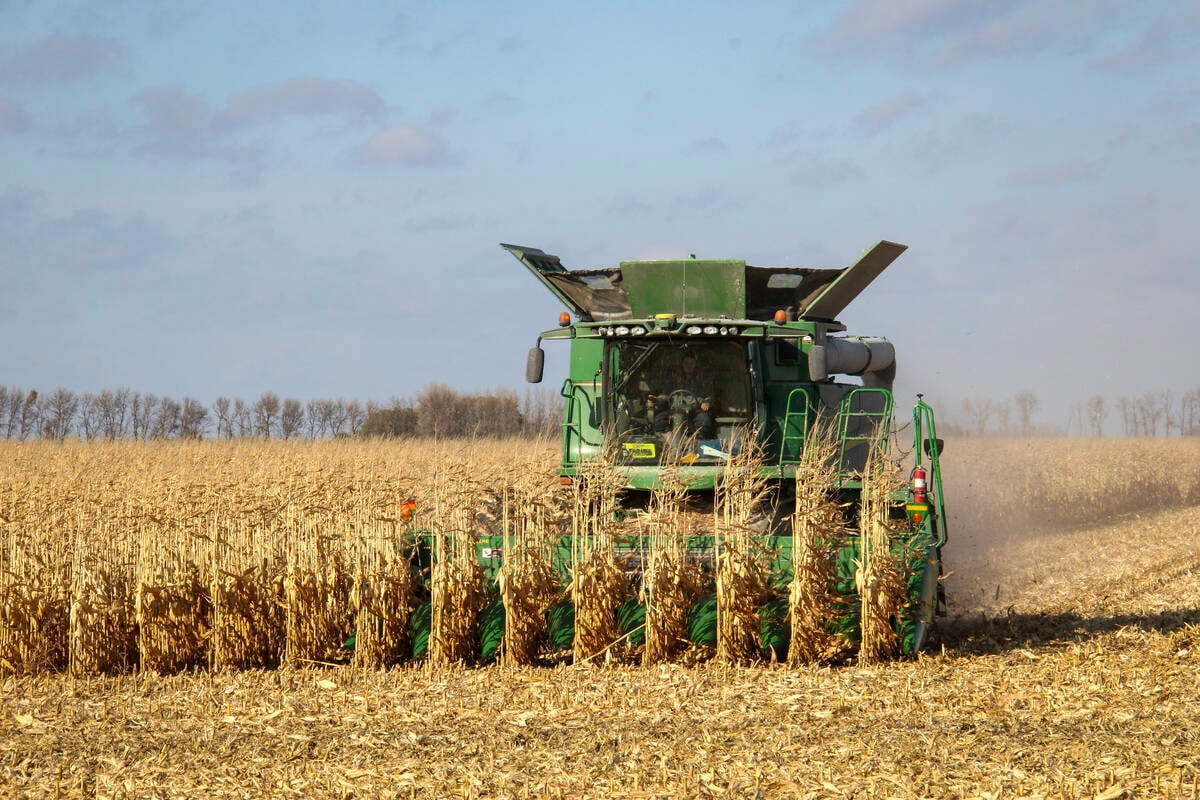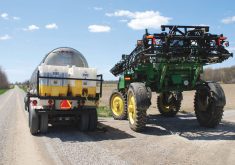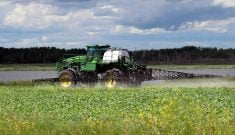New research shows cultural controls can combat the growing problem of herbicide-resistant weeds.
“Herbicide resistance is an increasing and growing issue across the Prairies and it is likely to have a greater impact in the future moving forward as well,” said Charles Geddes, research scientist in weed ecology and cropping systems with Agriculture and Agri-Food Canada.
Geddes spoke Feb. 16 at the CropConnect 2023 conference in Winnipeg.
Read Also

Manitoba corn research looks for home-based weed control
University of Manitoba researchers want corn growers to have Manitoba-based weed control advice, not U.S. or Ontario-based recommendations.
Why it matters: As weed resistance becomes a bigger issue, more tools are needed to fight it.
Geddes said the big ticket issues in terms of herbicide-resistant weeds include:
- Groups 1 and 2 resistant grass weeds, causing a reliance on soil-applied herbicides;
- multiple herbicide-resistant kochia that is developing protoporphyrinogen oxidase (PPO) inhibitor resistance;
- heavy reliance on glyphosate at multiple use windows;
- the advancing range of invasive and resistant amaranthus species, including palmer amaranth and waterhemp; and
- the spread of several Group 2 resistant broadleaf weeds.
“There’s no silver bullet when it comes to these issues in weed management,” said Geddes. “Approaches to managing herbicide-resistant weeds will need to go beyond the sprayer. So we need to start considering cultural and mechanical tools and adding them to our integrated weed management programs.”
Geddes gave several examples of recent research on herbicide-resistant kochia.
The first was a rotational study involving a wheat-canola-wheat-lentil crop rotation. It is a fully phased rotation, meaning all crops in the rotation are there every year.
The study also compared wide rows (18 inches) versus narrow rows (nine inches), as well as recommended versus double the recommended seeding rates.
“So the idea is that narrower row spacing and higher seeding rates can promote a more competitive crop, and greater competition from the crop means reduced seed production in the kochia,” said Geddes.
In the rotation that researchers thought would be most competitive (narrow rows and higher seeding rates), lower kochia biomass was observed.
“I should mention in this study that we seeded in glyphosate and Group 2 resistant kochia at the beginning, so we’re looking at multiple herbicide-resistant kochia here,” said Geddes. “In general, we saw greater kosher biomass in the lentils” due to limited post-emergence herbicide options.
The study found that doubling the seeding rates reduced kochia biomass by 64 per cent.
Looking at row spacing in all crops in all years of the study, tighter spacing reduced kochia biomass by 56 per cent. However, Geddes said combining narrow row spacing with increased seeding rates reduced kochia biomass by 80 per cent overall.

“To put that into perspective, that 80 per cent threshold is what is considered by herbicide regulators as ‘registration of control’ of a weed on a new herbicide,” said Geddes. “So just by narrowing up rows, and increasing seeding rates, we’re seeing a level of control that is similar to a new effect of herbicide mode of action.”
He also discussed a study based on crop rotation diversity.
“We’re looking at the diversity of crops in a rotation, but also the diversity of the life cycles of those crops and the rotation.”
The study started with a wheat-canola-wheat-lentil rotation. Then spring wheat was replaced with winter wheat.
“So now you have a winter annual, summer annual, winter annual, summer annual rotation,” said Geddes.
The winter wheat is established in spring when kochia is just emerging, giving winter wheat a competitive advantage.
“Across the board, we found that if you include winter wheat in the rotation, you could reduce the kochia biomass to 64 per cent,” said Geddes.
The study also measured the density of kochia at three different times: before the post emergence herbicide, after the post-emergence herbicide and right before harvest.
“If you included winter wheat in those rotations, we decreased kochia densities overall by 74 per cent.”
Geddes also referenced a soybean study conducted in six different site years in Lethbridge, Alta., Indian Head, Sask., and Carman, Man.
“We wanted to look at true integrated weed management so in this case, we were integrating multiple different cultural tools together, and look at what that does for weed management.”
Researchers used two soybean cultivars, one bushy and one slender. They looked at wide (24–30 inch) and narrow (7.5–10 inch) row spacings and at target density of 160 living plants per acre. They compared that to 1.5 times the recommended target density (240 plants per acre) and with or without a fall rye cover crop.
“So this was a shoulder season fall rye cover crop, seeded in the fall and terminated with the pre-plant burndown herbicide application for the soybeans, maybe one to two days before planting soybeans,” said Geddes.
All parameters were tested in both a weed-free and weedy environment.
Geddes said the most competitive mixture was a fall rye cover crop with the bushy cultivar, seeded into narrow rows at one and a half times the recommended density for soybeans.
“We thought that that would be the most competitive overall, and it does seem to be that way.”
That mixture reduced weed biomass by 59 per cent. However, a 55 per cent reduction was achieved with those same parameters without planting into a fall rye cover crop.
“That’s probably going to be the most cost-effective overall when you’re talking about implementing these cultural tools for integrated weed management,” Geddes said.
















